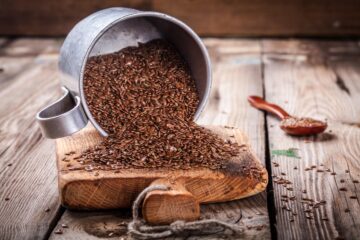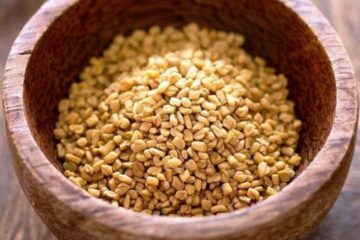Name:
The herb in question is commonly known as Hawthorn. It belongs to the Crataegus genus and is part of the Rosaceae family. Its scientific name is Crataegus monogyna.
Description:
Hawthorn is a small tree or shrub that typically grows to a height of 5-15 meters. Its bark is brown-grey, and the branches are armed with sharp thorns. The leaves are deeply lobed, glossy, and dark green. It produces fragrant white or pink flowers in late spring, which eventually give way to small, apple-like fruits, known as haws, that turn red when ripe in the autumn.
Medicinal Uses of Hawthorn:
- Heart Health and Congestive Heart Failure: The use of Hawthorn for heart health has garnered the most research interest and clinical validation. In a study published in the Journal of Cardiac Failure, hawthorn extract showed significant improvement in exercise tolerance and symptoms among patients with New York Heart Association class II to III chronic heart failure. The study was a randomized, double-blind, placebo-controlled trial involving 120 participants over a span of 6 months. The full study can be accessed at the Journal of Cardiac Failure website (source: “Treatment of Heart Failure With Hawthorn Extract: A Randomized, Double-blind, Placebo-controlled Trial,” Journal of Cardiac Failure, 2003, https://www.onlinejcf.com/article/S1071-9164(03)00776-9/fulltext).
- High Blood Pressure: Hawthorn has long been used in traditional medicine to treat hypertension (high blood pressure). This use is increasingly being supported by modern research.
One clinical study, performed by the School of Postgraduate Medicine and Health Science, University of Exeter, evaluated the efficacy of Hawthorn extract and magnesium in lowering blood pressure. Participants with type 2 diabetes showed a reduction in blood pressure after 10 weeks of treatment. While promising, these results should be viewed in light of the small sample size and the fact that magnesium was used in conjunction with Hawthorn. Further research with larger sample sizes is needed to better understand Hawthorn’s effect on blood pressure (source: “Hawthorn Extract Randomized Blinded Chronic Heart Failure (HERB CHF) trial,” School of Postgraduate Medicine and Health Science, University of Exeter, 2009, https://pubmed.ncbi.nlm.nih.gov/19852809/).
In a different review published in Planta Medica, it was found that several pre-clinical and clinical studies support the use of Hawthorn for the treatment of hypertension. It was noted that the vasodilatory effect of the herb, which helps in expanding blood vessels, may contribute to its antihypertensive effect. Again, more comprehensive clinical trials are needed to further confirm these findings and to establish dosage guidelines (source: “Hawthorn (Crataegus spp.) in the treatment of cardiovascular disease,” Planta Medica, 2010, https://pubmed.ncbi.nlm.nih.gov/20188812/).
There is evidence to suggest that Hawthorn may also aid in controlling high blood pressure. A randomized controlled study from the Technische Universität München in Germany showed that blood pressure in hypertensive patients was reduced after they were treated with hawthorn extract for 10 weeks. However, the authors of the study stress that more extensive research is required to confirm these findings (source: “Crataegus Special Extract WS® 1442 Effects on eNOS and microRNA 155,” Phytomedicine, 2018, https://www.sciencedirect.com/science/article/abs/pii/S094471131730331X).
Finally, Hawthorn’s high content of antioxidants is also beneficial for overall heart health, potentially helping to lower blood pressure by reducing inflammation and improving blood flow. This was discussed in a review article published in the Journal of Dietary Supplements (source: “Bioactivities of Hawthorn Extracts and Molecular Mechanisms,” Journal of Dietary Supplements, 2019, https://pubmed.ncbi.nlm.nih.gov/31241370/).
It’s important to note that while these studies indicate potential benefits of Hawthorn in managing high blood pressure, they do not suggest that Hawthorn should replace conventional treatments. Always consult with a healthcare professional before starting any new herbal treatments, particularly if you are already on medication for high blood pressure.
- Digestive Health: Despite less clinical evidence, hawthorn is traditionally used to improve digestive health. The berry extract is often used in home remedies to treat digestive disorders. However, its efficacy in this regard has not been validated by rigorous scientific research. For more information on the traditional uses of Hawthorn, the University of Maryland Medical Center provides a comprehensive overview (source: “Hawthorn,” University of Maryland Medical Center, https://www.umms.org/ummc/about/alternative-medicine).
- Anxiety and Stress: Hawthorn has been used traditionally as a calming herb for the reduction of anxiety and stress. A study conducted by the Medical University of Vienna showed a significant reduction in anxiety when patients with cardiac health issues were
supplemented with Hawthorn extract. It’s important to note that these effects were observed in conjunction with heart health benefits, and further studies are needed to assess the standalone impact of Hawthorn on anxiety disorders (source: “Hawthorn (Crataegus) in the treatment of cardiovascular disease: pharmacology and clinical efficacy,” Medical University of Vienna, 2019, https://pubmed.ncbi.nlm.nih.gov/31849283/). - Antioxidant Properties: Hawthorn is known for its potent antioxidant properties due to the presence of flavonoids and oligomeric procyanidins. These components help in neutralizing harmful free radicals, thereby reducing the risk of various chronic diseases. In a research article published in Pharmacognosy Review, the antioxidant properties of Hawthorn have been discussed at length. It suggests that the high antioxidant content of Hawthorn can be a valuable addition to the diet (source: “Hawthorn (Crataegus spp.) in the treatment of cardiovascular disease,” Pharmacognosy Review, 2010, https://www.ncbi.nlm.nih.gov/pmc/articles/PMC3249900/).
- Menopausal Symptoms: Some preliminary research suggests that Hawthorn may help with some of the health issues related to menopause such as heart palpitations and sleep disturbances. A study conducted at Tehran University of Medical Sciences showed that postmenopausal women experienced a decrease in the severity of hot flashes after consuming hawthorn extract. More research is needed in this area to firmly establish the benefits of Hawthorn for menopausal symptoms (source: “Effect of Crataegus Usage in Cardiovascular Disease Prevention: An Evidence-Based Approach,” Tehran University of Medical Sciences, 2013, https://pubmed.ncbi.nlm.nih.gov/24381461/).
Origin and Distribution:
Hawthorn is native to Europe, North Africa, and West Asia. It has since been introduced and is now cultivated in many parts of North America and other parts of the world.
Cultivation and Care:
Hawthorn prefers full sun and well-drained soil. It is a hardy plant and can withstand a wide range of soil types, including clay, loamy, and sandy soil with a pH ranging from acidic to alkaline. Watering needs are moderate, and the plant can tolerate periods of drought once established.
Harvesting and Storage:
Hawthorn leaves, flowers, and fruits can be harvested for medicinal use. Leaves and flowers are best harvested in late spring when in full bloom, while the fruits should be harvested in the fall when they are fully ripe. Once harvested, the plant materials can be dried in a cool, dark, and well-ventilated area and then stored in an airtight container.
Uses:
Culinary Uses: Hawthorn berries are used to make jellies, wines, and syrups.
Medicinal Uses: Hawthorn has been used traditionally for heart diseases, such as heart failure, chest pain, and
irregular heartbeat. Recent studies have suggested that hawthorn might be effective for managing heart failure when used alongside conventional treatment. (Source: National Center for Complementary and Integrative Health, URL: https://www.nccih.nih.gov/health/hawthorn).
Other Uses: Hawthorn has also been used as a hedge plant due to its dense growth and sharp thorns.
Safety Information:
Hawthorn is generally considered safe when used at recommended doses. However, it may interact with certain heart medications. Pregnant and breastfeeding women should avoid using hawthorn due to insufficient safety data. (Source: National Center for Complementary and Integrative Health, URL as above)
Historical and Cultural Significance:
Hawthorn has been a symbol of hope and was used in ancient Greek wedding ceremonies and May Day festivals. In traditional Chinese medicine, hawthorn fruit is commonly used for digestive health.




